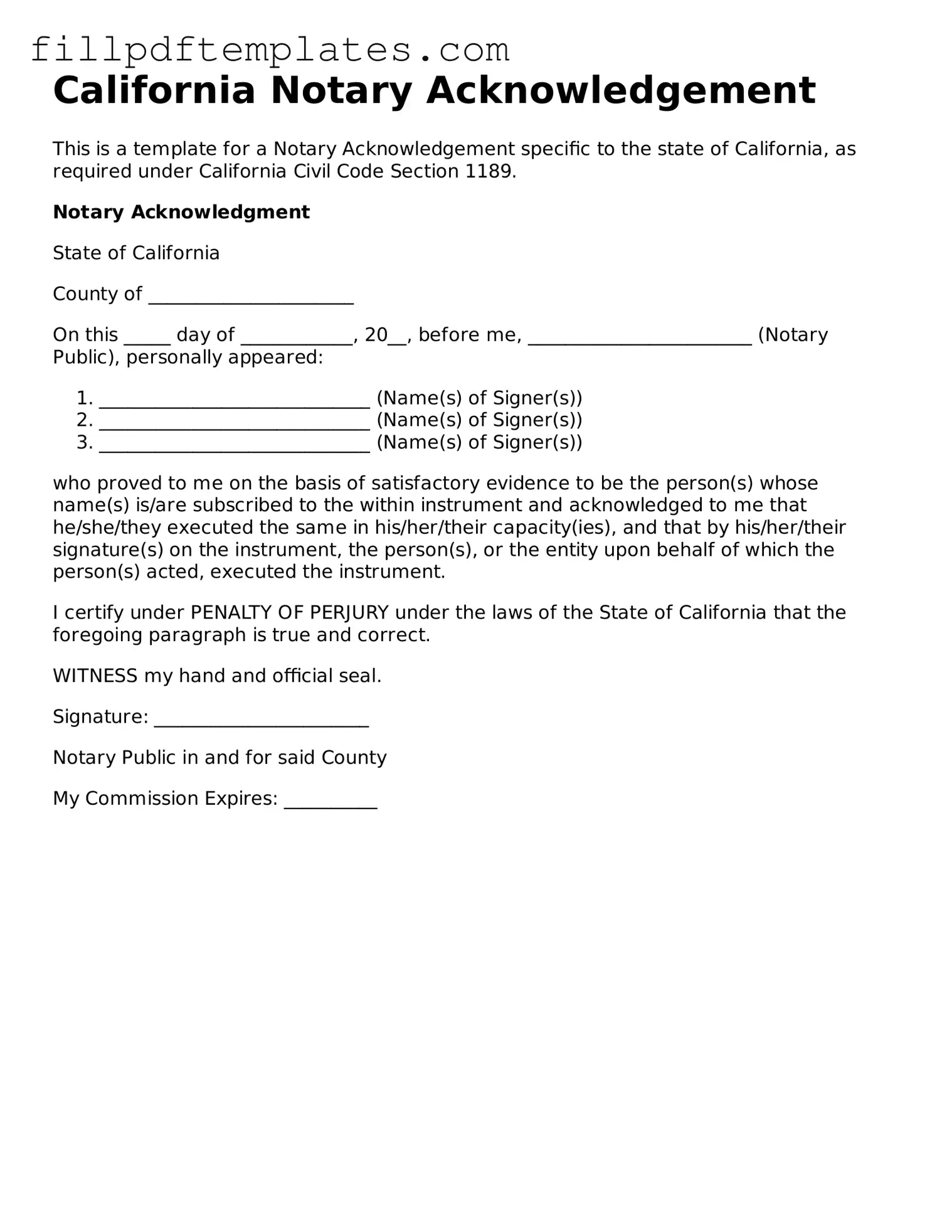California Notary Acknowledgement
This is a template for a Notary Acknowledgement specific to the state of California, as required under California Civil Code Section 1189.
Notary Acknowledgment
State of California
County of ______________________
On this _____ day of ____________, 20__, before me, ________________________ (Notary Public), personally appeared:
- _____________________________ (Name(s) of Signer(s))
- _____________________________ (Name(s) of Signer(s))
- _____________________________ (Name(s) of Signer(s))
who proved to me on the basis of satisfactory evidence to be the person(s) whose name(s) is/are subscribed to the within instrument and acknowledged to me that he/she/they executed the same in his/her/their capacity(ies), and that by his/her/their signature(s) on the instrument, the person(s), or the entity upon behalf of which the person(s) acted, executed the instrument.
I certify under PENALTY OF PERJURY under the laws of the State of California that the foregoing paragraph is true and correct.
WITNESS my hand and official seal.
Signature: _______________________
Notary Public in and for said County
My Commission Expires: __________
